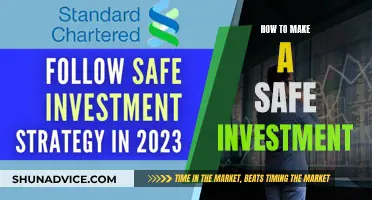
Investing in camera equipment can be a daunting task for indie directors, especially with the wide range of options available. The type of camera and equipment needed will depend on the director's budget, the type of projects they work on, and their level of experience. While it's not necessary to have a film studio to get studio-level shots, investing in certain equipment can open up possibilities for directors to improve their craft.
| Characteristics | Values |
|---|---|
| Camera | Used iPhone for $100 or less; big-budget film sets can cost tens of thousands of dollars; many options in between; sophisticated models for around $2,000 |
| Lenses | Wide-angle, zoom, and macro lenses; basic non-zoom lenses start at $30 |
| Microphones | Lavalier mics start at $30; portable recorders start at $100 |
| Tripod | Basic tripod starts at $125; "fluid head" tripod allows you to swivel the camera around |
| Gimbal | Basic gimbals start at $200 |
| Lighting | Multipurpose LED panels start at $250; twice as much for a more enduring option |
| Reflectors | Five-in-one reflectors start at $13 |
| Computer | Used Mac for as low as $300; new ones can run up to several thousand dollars; used PCs can be found for under $200 |
| Editing software | Final Cut Pro is a one-time cost of $299; Adobe Premiere Pro is a monthly subscription starting at $20.99 per month |
| External hard drive | 5T WD My Passport runs for $109 |
| Camera bag | No-frills video camera bags start at $60 |
What You'll Learn

Camera vs. phone: pros and cons
Pros of Using a Phone
- Convenience: You always have your phone with you, so you can capture moments whenever they arise.
- Ease of Use: You already know how to use your phone's camera, and the same basic functionality will be there even if you upgrade to a newer model.
- Simple Uploads: You can edit and upload footage straight from your phone, without needing any additional software or hardware.
- Two Cameras in One: Phones have front-facing cameras, which can be extremely useful for vlogging or filming yourself.
- Accessories: There are many cheap and easy-to-use accessories available for phone cameras, such as gimbals, waterproof cases, and additional lenses.
- Portability: Phones are compact and lightweight, making them easy to carry around and film with on the go.
- Durability: Smartphones are often dust-resistant, splash-proof, and even waterproof, meaning they can be used in environments that would require additional housing for a camera.
- Variety of Shooting Modes: Phones often offer special shooting modes such as panorama, slow motion, time-lapse, and portrait mode.
- Affordability: Smartphones are usually far cheaper than a digital camera kit with all the necessary lenses, batteries, and attachments.
Cons of Using a Phone
- Poor Low-Light Performance: The small sensors in phone cameras mean they struggle in low-light environments, producing noisy and soft-looking footage.
- Poor Sound Quality: Omnidirectional built-in microphones pick up too much background noise and don't offer the same quality as an external microphone.
- Ergonomics and Camera Shake: Phones are small and can be difficult to stabilise or hold comfortably for long periods, leading to shaky footage.
- Limited Recording Options: Phones often lack the ability to shoot at higher frame rates, which can cause awful flickering under certain artificial lights.
- Lack of Creative Control: You can't change settings like shutter speed or aperture on a phone, limiting your ability to achieve a cinematic look.
- Lower Quality and Resolution: Footage captured on a phone will generally be lower quality and lower resolution than that captured on a dedicated camera.
Pros of Using a Camera
- Quality: Cameras offer much more potential for amazing photos and videos, with your skills being the only limitation.
- Versatility: You can use a variety of techniques and settings to create professional-looking photos and videos in any lighting situation.
- Lighting: Larger sensors and interchangeable lenses mean that cameras perform much better in low-light environments than phones.
- True Optical Zoom: Cameras offer true mechanical zoom, whereas phones only have digital zoom, which reduces image quality.
- Lenses: The ability to interchange lenses is crucial for controlling focal length, f-stop, angle, and distance.
- Accessories: Cameras support a wider range of high-quality accessories, such as cages, microphones, lights, and transmitters.
- Steady Footage: With the right equipment, such as a tripod or gimbal, it's much easier to capture steady and smooth footage with a camera.
Cons of Using a Camera
- Cost: Cameras and their associated gear are much more expensive than smartphones.
- Learning Curve: It takes time and effort to learn how to use a camera and its various settings to their full potential.
- Time: The process of capturing, transferring, editing, and uploading footage takes significantly longer than with a phone.
- Bulk: Camera equipment is larger and bulkier than a phone, making it less convenient to carry around.
Morgan Stanley Investment Management: Strategies and Services
You may want to see also

Camera equipment: what to invest in
Camera equipment is an expensive investment, so it's important to know what to invest in. Here are some tips on what camera equipment is worth investing in:
Quality lenses: While a good lens may not necessarily improve your photography skills, it will improve the quality of your photos. Upgrading your lens can result in better sharpness, focusing speed, contrast, and colour, as well as fewer aberrations and sun flares. Quality lenses also tend to have better build quality and handling.
Extra batteries and memory cards: This is a fairly inexpensive but beneficial investment. Memory cards are becoming cheaper, so it's a good idea to stock up on high-capacity cards.
A sturdy tripod: If you're doing studio work or nature/sports photography, a good tripod is essential. Look for one that's easy to set up and carry, and that offers smooth movement capabilities.
Lighting and bounce gear: Lighting equipment is crucial, especially if you're shooting indoors. LED panels are a good option, and don't forget to use diffusers to soften the light and reduce harsh shadows.
Gimbals and slider tracks: These tools can help you achieve steady, smooth camera movements. Gimbals stabilise the camera along three axes, while slider tracks allow for smooth panning shots.
Microphones and audio gear: Don't neglect audio quality! Lavalier mics and portable recorders are cost-effective options for capturing sound.
Computer and editing software: You'll need a computer and software to edit your footage. Mac computers are popular among filmmakers, but PCs are more affordable. Final Cut Pro is a good one-time purchase option, while Adobe Premiere Pro is a subscription-based service.
External hard drives: Video footage takes up a lot of space, so invest in external hard drives to store and back up your footage.
While it can be tempting to buy the latest and greatest camera equipment, it's important to consider your needs and budget carefully. Buying used or older models can often be a more cost-effective option.
Global Investment Factors: What Doesn't Affect International Portfolios?
You may want to see also

Camera equipment: what not to invest in
As an indie director, you may be wondering whether to invest in camera equipment. While it's not necessary to have the latest and most expensive gear, there are certain pieces of equipment that can enhance your filmmaking. Here are some tips on what not to invest in when it comes to camera equipment:
- Don't invest in a slightly newer camera: The value of cameras depreciates quickly, and once you invest in a camera, any newer model that comes out will likely have some improved features. However, this doesn't mean your current camera is not good enough. DSLRs from a few years ago may have slower frame rates or lack video capabilities, but they can still capture excellent photos and compete with today's cameras. Instead of upgrading every time, ask yourself if a new camera will truly add value to your personal or professional photography needs.
- Don't invest in cheap filters: Cheap filters are one of the worst things you can buy for your lens. Plastic and poor-quality glass filters can degrade image quality, causing a loss of sharpness, reduced contrast, and strange glares from reflections. Most professional photographers forgo protective or UV filters, especially when using expensive lenses. If you do purchase filters, invest in high-quality options from brands like Hoya or Tiffen.
- Don't overspend on a tripod: While a tripod is essential for stable shots, you don't need to spend a fortune on it. Basic tripods can start as low as $20, and you may not need anything fancier if you're just starting out. However, as your needs evolve, you may want to consider investing in a tripod with better movement capabilities and a swappable head.
- Don't neglect second-hand options: If you're on a budget, consider purchasing second-hand or refurbished camera equipment. You can often find older DSLR bodies and lenses at significantly lower prices, and they can still deliver excellent results. Just make sure to do your research and buy from reputable sources to ensure the equipment is in good condition.
- Don't forget about lighting and audio: As an indie director, you may be focused primarily on the camera itself. However, lighting and audio play crucial roles in the overall quality of your films. Invest in basic lighting equipment, such as LED panels, and audio gear like lavalier microphones and portable recorders to ensure your films have clear and crisp sound.
Understanding the Makeup of a Modern Investment Portfolio
You may want to see also

Camera types: pros and cons
Compact Digital/Point and Shoot Cameras
Pros: No need for film or extra lenses, pocket-sized, durable, high-resolution snapshots.
Cons: Limited control over shutter speed and aperture, noisy photos due to small sensor, limited zoom range.
Bridge Cameras
Pros: Single camera and lens for most focal length needs, superior image quality to most point-and-shoot cameras, budget-friendly, good balance between portability and versatility.
Cons: Single lens may not be ideal for specialised needs, more expensive than simple point-and-shoots, slower operational speed than ILC.
DSLRs
Pros: Interchangeable lenses, fully customisable settings, large sensors for cleaner images, high-resolution photo and video output, robust, superior battery life.
Cons: Requires ample know-how, more expensive.
Mirrorless Cameras
Pros: Electronic viewfinder, simpler operation and controls, faster and better for video, higher video quality, shoots more images at faster shutter speeds, more portable and travel-friendly.
Cons: Shorter battery life.
Medium Format Cameras
Pros: Excellent image quality, shallower depth of field.
Cons: Generally more expensive than full-frame cameras, physically larger with larger/heavier lenses, lower frames per second.
Action Cameras
Pros: Versatile and mountable, remote view and shutter via smartphone, durable, high-resolution output.
Cons: Viewfinder too small, limited digital zoom, exposure settings not fully customisable.
360 Cameras
Pros: Small and lightweight, versatile and mountable, takes realistic 360-degree photos and videos, live view or streaming.
Cons: Lower resolution output, sensitive to camera shake and blurring, limited digital zoom, challenging to frame shots.
Instant Cameras
Pros: Instant physical prints, great for gatherings and parties, various sizes available, colour or black and white media.
Cons: Print is generally not as detailed as from a dedicated photo printer, dynamic range and colours are not as good as lab prints, different sizes are available but are usually still no larger than 5” x 7”.
Film Cameras
Pros: Image resolution and size (for medium and large format), beautiful, artistic photos, vintage-looking hardware, cheap, good quality lenses.
Cons: Expensive and recurring film cost, no internal light meter, risk of parallax, focus, and exposure errors.
Smartphone Cameras
Pros: Robust computational photography features, variety of built-in lenses, convenient, powerful content creation tool.
Cons: In certain situations, computational photography can’t overcome downsides of a small sensor, only prime lenses available, "digital" look to images.
Rebalancing Investment Portfolios: Yearly Refresh for Optimal Returns
You may want to see also

Indie directors: pros and cons
As an indie director, investing in camera equipment can be a double-edged sword. On the one hand, having your own equipment can provide you with more creative control, flexibility, and the ability to experiment with different shots and techniques. On the other hand, camera equipment is expensive and can be a significant financial burden, especially for indie directors who may have limited budgets.
Pros of Investing in Camera Equipment:
- Creative Control and Flexibility: Having your own camera equipment gives you more control over the creative process. You can choose the specific cameras, lenses, and accessories that suit your unique style and vision, rather than being limited to what rental houses or other sources provide. This freedom allows you to develop and refine your craft, experiment with different techniques, and build a distinct visual style.
- Consistency and Reliability: Investing in your own equipment ensures consistency and reliability across projects. You won't need to worry about equipment availability or compatibility issues when working with rented or borrowed gear. This can streamline your production process, ensuring that you can capture the shots you need without delays or workarounds due to equipment limitations.
- Long-Term Cost Savings: While the initial investment in camera equipment can be high, it may save you money in the long run. Renting or borrowing equipment for each project can add up quickly, and you may also need to factor in insurance and other associated costs. By owning your gear, you can avoid these recurring expenses, especially if you take good care of your equipment and only need to replace or upgrade it occasionally.
Cons of Investing in Camera Equipment:
- High Initial Cost: Camera equipment, especially high-quality options, can be very expensive. As an indie director, you may not have the budget to invest in all the gear you need upfront. This can limit your options, forcing you to start with more basic or outdated equipment, or even deter you from investing at all.
- Maintenance and Upgrades: Camera equipment requires regular maintenance and, eventually, upgrades. This includes cleaning, calibration, and repairs, all of which come at an additional cost. Additionally, as technology advances, you may feel pressured to upgrade your equipment to stay competitive and access the latest features, which can be costly.
- Limited Funds for Other Aspects of Filmmaking: As an indie director, your budget is likely limited. Investing a significant portion of your funds in camera equipment may mean compromising on other essential aspects of filmmaking, such as sound, lighting, post-production, or talent. It's important to strike a balance and ensure that all critical elements of your film are adequately resourced.
Ultimately, the decision to invest in camera equipment as an indie director depends on your specific circumstances, including your budget, the type of projects you undertake, and your long-term career goals. While owning your equipment can provide creative freedom and consistency, it's also a substantial financial commitment that may impact other areas of your filmmaking.
A Beginner's Guide to Investing in WazirX in India
You may want to see also
Frequently asked questions
This depends on your needs and budget. If you plan to create your own images and have the time and money to invest in equipment, then buying a camera may be a good option. However, if you need high-quality photos and don't want to worry about the technical aspects, hiring a professional photographer might be a better choice.
There are various cameras suitable for indie filmmakers, including DSLRs, mirrorless cameras, and cinema cameras. Popular choices include the Canon C200, Sony A7S III, Panasonic GH5, and Blackmagic Pocket Cinema Camera 6K. Your choice should consider budget, lens compatibility, frame rates, and audio capabilities.
Essential equipment includes lenses, audio gear, lighting equipment, and support gear. Invest in quality lenses, a tripod or gimbal for stability, lighting kits like LED panels, and audio equipment like microphones and recorders.
The cost of camera equipment varies widely. You can get started with a basic setup for a few thousand dollars, but more advanced gear can cost tens of thousands. It's important to assess your needs and budget accordingly.
Investing in camera equipment can provide you with creative control, flexibility, and the ability to improve your film's production value. It allows you to capture high-quality visuals and audio, experiment with different lenses and lighting techniques, and develop your skills as a filmmaker.







